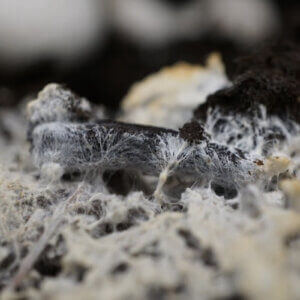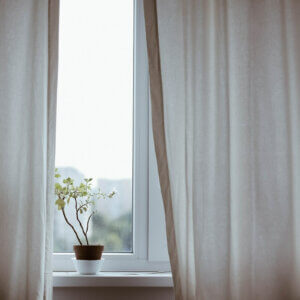“What is that tall blue flower? I can see it from my kitchen window.” My neighbor was intrigued by the bursts of growth and color in my ever-expanding garden.
“Delphinium,” I said. “It was here when we moved in. Stunning, isn’t it?”
“It certainly is.”
I thought it was more purple than blue. But the tall spikes covered in tiny mounds of flowers were a conversation piece. I had never grown delphiniums before. Discovering a large plant already firmly established in front of what I call my writing window (I sit at an old spinet desk at this very window every day to write) was a bonus.

Sadly, the flowers were short-lived. And being tall with a heavy abundance at the top of each stalk, all it took was one heavy rain to knock it over and send the flowers sprawling all over the grass. I enjoyed it while I could, and after my first summer, I sunk a tall rose climber into the ground to support the top-heavy stalks and protect them from heavy rain.
Part of a genus of over 300 species (Ranunculaceae), my specific delphinium is actually a cultivar, cultivated as an ornamental plant. And that it definitely is! It certainly lives up to its symbolic associations. All plants have symbolic associations and delphinium is symbolically big-hearted and fun. I know mine is.
Mostly found in the northern hemisphere and in some of the high mountains of tropical Africa, delphinium is also known by its common name of larkspur. It’s important to note that all the members of the delphinium family are toxic to both humans and livestock.

The plant is tall, gracious and laden with many flowers, each sporting usually five petal-like sepals surrounding a hollow pocket with a spur at the end (perhaps the source of its common name, larkspur). The stalk or the raceme (which is sometimes as tall as 2 meters) is unbranched and full of flowers, from almost halfway up the stalk to its tip. The leaves fan out from the raceme, each deeply lobed with three to seven toothed projections. At a distance, the leaves almost bear a resemblance to the shape and size of a maple tree leaf.
I always watch with anticipation from late June until the full heat of summer brings along the burst of blooms. A great pollinator plant, delphiniums attract hummingbirds, butterflies, and bees, and I get to watch the entire show from beyond my writing window. In spite of its high level of toxicity, delphinium is food to various larvae like the dot moth.

This toxic plant is dangerous, especially the younger parts of the plant. If consumed by humans, it will cause severe digestive issues, and if touched, it can cause severe skin irritation. All parts of the plant contain poisonous chemicals, including various diterpenoid alkaloids like methyllycaconitine. Even the seeds are toxic with a 1.4% content of alkaloids.
With its cardiotoxic and neuromuscular blocking effects, consumption of any part of this plant can cause death within hours. This is a big concern for ranchers in the western rangelands of the United States. The wild varieties of delphinium (larkspur) are the root cause of cattle poisonings causing death. Consequently, ranchers often delay moving their cattle to the higher elevations until later in the summer when larkspur is considerably less toxic.
https://www.instagram.com/p/Bosp0ILHkx_/?tagged=delphinium
Delphinium is not totally useless. Other than a good pollinator, the juice of the flowers when mixed with alum creates a blue ink. And some people do consider this plant an herb, and they use the stalks and roots to make a poultice for skin ailments, inflammation, wounds, and snake bite. The root, when made into a powder, is believed to control pain. Some also claim the plant is useful to create treatments for acid reflux, anorexia, and asthma.
Personally, knowing its high level of toxicity, I would be wary of any medicinal uses for this plant. The ornamental beauty is so short-lived, I like to think of delphinium as my garden treasure: Something to be enjoyed in full bloom and a plant that attracts all kinds of multi-colored and fascinating pollinators.
https://www.instagram.com/p/BomQatznki6/?tagged=delphinium
Delphinium is an ornamental plant. One that benefits the pollinators. With the concern over the declining population of pollinators like honeybees, that in itself gives this beautiful summer plant a purpose other than looking “pretty”’. Tall and gracious, it makes a perfect backdrop to other ornamental plants like roses, lilies, and geraniums.










































Why are beautiful flowers and plats like this poisonous?
Thanks for the post. It’s really enlightening.
I did not know about this flower. It is very impressive and pretty, however, what you wrote makes me apprehensive about planting it.
Thank you for a very interesting post.
Photo/Attachment:
I tried to break the flower so it would flower again, little did I know it would turn my finger black. It was a worry. From now on I will use gloves and cut the flowers with scissors. What should I do to treat this.
How enlightening this is!!! I happen to note this flower name for study when I heard in #thehuntsmanmovie it is good for toothache and piles when the dwarves were getting to know each other. I won’t dare be the cause of planting another poisonous plant… So ironic my favorite flowers turn out to have dire effects on people…
I like pink delphinium how to avail seeds, can i have some? Thank you
How do I compost the plant will it be toxic to put in my compost pile